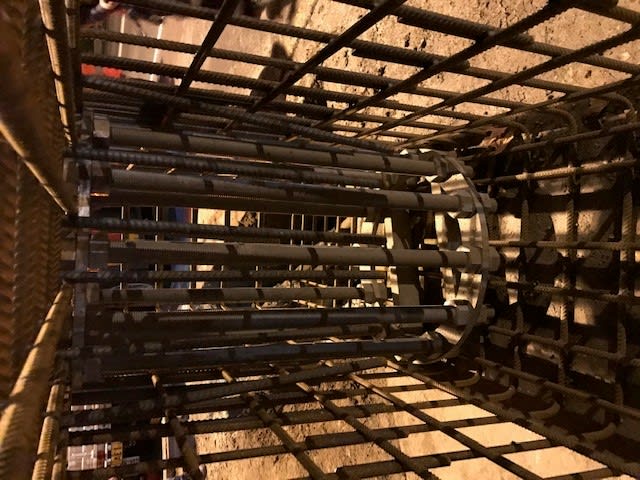bugbus
Structural
- Aug 14, 2018
- 515
What is normally the minimum requirement for anchoring a threaded rod into a concrete footing? (Assuming that there is enough reinforcement and sufficient edge distance to avoid a cone type failure or some other failure of the concrete.)
Our standard practice would normally be a plate, e.g. 50x50x6 or 75x75x8 or similar dimensions depending on the rod size, with a nut above and below the plate.
I have been reviewing some drawings by another consultant and they have specified a nut with a standard washer only. It seems that this would potentially crush the concrete above the washer.
I have also seen previously a single nut being used, which has a similar concern but even worse.
Any ideas?
Our standard practice would normally be a plate, e.g. 50x50x6 or 75x75x8 or similar dimensions depending on the rod size, with a nut above and below the plate.
I have been reviewing some drawings by another consultant and they have specified a nut with a standard washer only. It seems that this would potentially crush the concrete above the washer.
I have also seen previously a single nut being used, which has a similar concern but even worse.
Any ideas?

